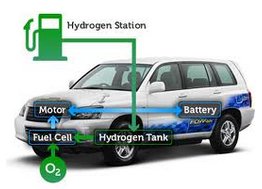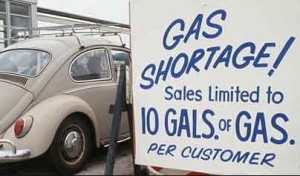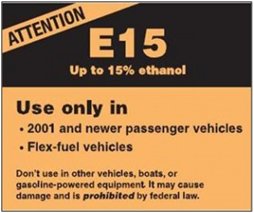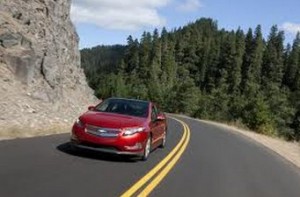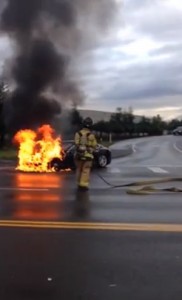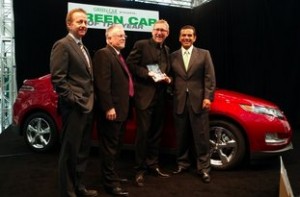 Green cars – fuel efficient, plug-in, hybrid, and alternative fuel vehicles – now have enough sales volume and interest to garner annual awards. I’ve counted five significant award contests being in place, with winners of two significant awards approaching. Here’s a review of finalists and winners so far for this year, and a few thoughts on what it all means…..
Green cars – fuel efficient, plug-in, hybrid, and alternative fuel vehicles – now have enough sales volume and interest to garner annual awards. I’ve counted five significant award contests being in place, with winners of two significant awards approaching. Here’s a review of finalists and winners so far for this year, and a few thoughts on what it all means…..
Green Car Reports just released five finalists for its Best Car to Buy award, all of them being 2014 models:
- BMW i3
- Chevrolet Cruze Diesel
- Chevrolet Spark EV
- Honda Accord Hybrid
- Mazda 3
There have been other nominees and winners named this year, including the influential Green Car of the Year award that will be given out at the LA Auto Show this month. Here is Green Car Journal’s top five:
- Audi A6 TDI
- BMW 328d
- Honda Accord (in four-cylinder, V-6, hybrid and plug-in hybrid versions)
- Mazda3
- Toyota Corolla
In April, Kelley Blue Book named its 10 Best Green Cars of 2013, all of them 2013 models and some coming in various versions including battery electric vehicles, hybrid, plug-in hybrid, diesel, and gasoline:
1. Nissan Leaf
2. Tesla Model S
3. Ford Focus
4. Chevrolet Volt
5. Toyota Prius Plug-in
6. Ford C-Max Energi
7. Volkswagen Jetta
8. Honda Fit
9. Toyota Avalon
10. Lincoln MKZ
As for the 2013 World Green Car finalists named earlier this year, the Tesla Model S, Renault Zoe, and Volvo V60 Plug-in Hybrid made the list that was announced at the New York International Auto Show; the Model S won the award. This award is presented by Bridgestone Corp. and looks at tailpipe emissions, fuel consumption, and use of major advanced power plant technology aimed at increasing the vehicle’s environmental responsibility.
Classic car buff magazine, Motor Trend, just named its top five hybrid and diesel cars in its analysis of fuel efficient vehicles:
- Volkswagen Jetta TDI
- Toyota Prius
- Volkswagen Jetta Hybrid
- Honda Civic Hybrid
- Chevrolet Cruze
Here’s what I get from studying the rankings:
- There’s still a wide split over the pragmatic present realities versus the long-term goals of clean transportation. Plug-in electric vehicles are embraced by many, but its influence is still quite marginal. The Chevy Volt took the Green Car of the Year award three years ago, but for all of the cars on the ranking this year for the most influential annual award, plug-ins have very little to do with it. Ron Cogan and the Green Car Journal team, along with its panelists, seem more supportive of highly fuel efficient gasoline and diesel internal combustion engine models.
- There are surprises, as well – especially Kelley Blue Book naming the plug-in Nissan Leaf as its No. 1 green car of the year. Battery electric and plug-in hybrid vehicles dominated its list, which is very interesting coming from a company focused on resale values.
- Diesel engine passenger cars, especially with turbocharged direct injection engines (TDI), are really taking off in the US. It doesn’t seem to matter that diesel is usually about 50 cents a gallon more expensive than regular gasoline these days. The fuel efficiency is great and driver experience and positive reviews are helping. German automakers have been selling a lot of diesel cars in Europe for many years, and the US market is now starting to open up (which Volkswagen seems to be counting on to earn its No. 1 sales spot in global auto sales). US automakers have started getting into the game, such as General Motors with the Chevrolet Cruze diesel version.
- Clean transportation shoppers have a lot of options today – whether you’re talking about fleet managers and purchase agents, government agencies and policy wonks, consumer organizations, environmental groups, or tire-kicking automotive journalists who go to all of the media days at car shows. Every green vehicle category has its hardcore advocates, but once all of the top five widely accepted industry standards are accepted – reduced emissions, fuel efficiency, safety, reliability, and performance – there’s a lot of competition in the market these days.
Aside from the awards, let’s take a look at top stories of the past week….
- Plug-in vehicle sales were stronger in October than September, but not near the record level seen in August. The Chevy Volt saw 2,022 deliveries, up 14% from September; the Nissan Leaf was right behind it with 2,002 units sold, up 2.5% from September’s 1,953. Ford was thrilled to have its C-Max Energi and Fusion Energi plug-in hybrids collectively beat the Toyota Prius Plug-in Hybrid in sales numbers for the first time.
- Tesla-Mania!: The automaker saw its biggest drop in stock value during October – down 17% from its peak of $23.5 billion to $19.4 billion at the end of the month…. Daimler AG would like to do more with Tesla beyond receiving electric motors for is Smart ForTwo EV and the new Mercedes-Benz B-Class EV….. Panasonic Corp. has a contract now with Tesla to supply lithium ion cells for the Model S and Model X battery packs, and that could mean $7 billion in revenue for Panasonic…. Elon Musk’s associates have formed Hyperloop Transportation Technologies, a company seeking investors for the high speed rail network that will get from San Francisco to Los Angeles in just 30 minutes….. Edmunds.com reported that the Tesla Model S is now the most-registered new car in eight of 25 wealthiest US neighborhoods tracked by zip code.
- GreenLots is bringing its Sky open access network to the Vancouver area as part of the west coast’s DC fast charger corridor that so far extends through Oregon and Washington and will soon go up into British Columbia and down to California.
- BYD Co. defended itself in a California court yesterday on charges that it didn’t comply with minimum wage laws for engineers working at its Lancaster, Calif., plant and its Los Angeles office. The Chinese company has a contract to make electric buses for the Los Angeles Country Metropolitan Transportation Authority.
- Respected junior college training center Rio Honda Community College in California is offering a campus tour on Nov. 14 from 11:00 am until around 1:00 pm PST. Click here to learn more and register for the facility tour at what’s one of the most significant training grounds for future engineers and service technicians in: CNG; LNG; hydrogen fuel systems; hybrid, plug-in hybrid, and battery electric technologies; high-voltage storage and generation technology; and solar and wind energy technology.
- Via Motors’ plug-in hybrid cargo van, built on the Chevrolet Express platform, passed its crash tests needed to be met before it can go on sale, according to the company. The van gets 35 miles on battery only, with a total range of 400 miles.
- Ford recalled 2,618 Focus Electric cars due to potential loss of power to its wheels while in motion that’s related to software anomalies. Nearly all of these 2012 to 2014 models were sold in the US, and the automaker says there was one crash and no injuries related to the recall question.
- Biofuel and oil industry lobbyists are quite busy in Washington as the White House and US Environmental Protection Agency prepare to issue a ruling on ethanol blending rules implementing the federal Renewable Fuel Standard.
- While this TV ad campaign has been around since the summer, you may have noticed General Motors advertising that the GMC Sierra pickup is in league with the Hoover Dam’s smart grid hydropower. Fuel efficiency and performance are promoted as GM competes for truck sales head-to-head with the Ford F-Series pickups and its EcoBoost-powered engines.



